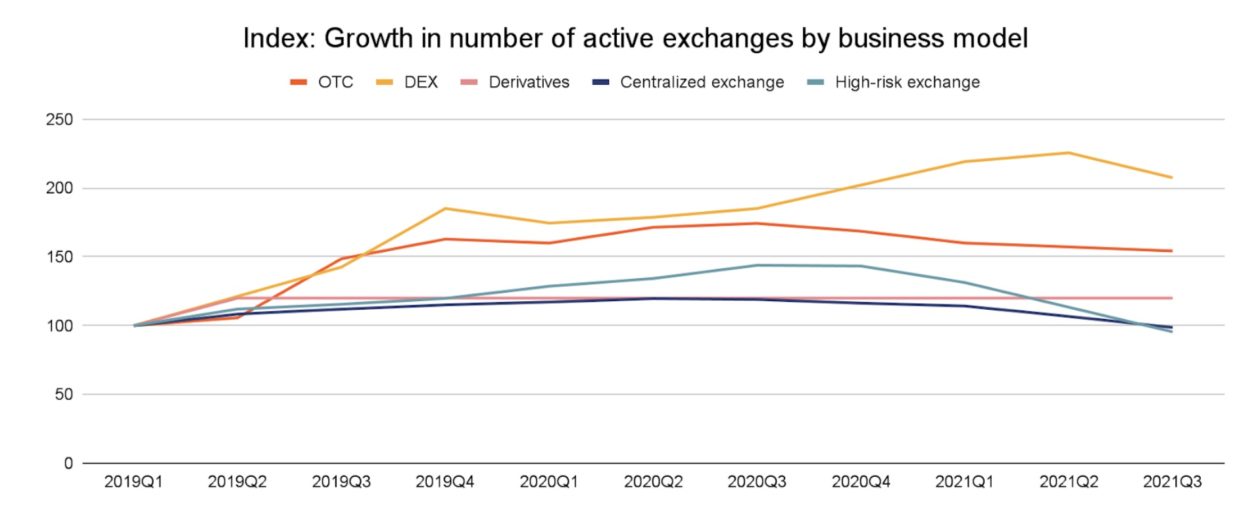The highly competitive cryptocurrency exchange industry appears to be consolidating, according to blockchain analytics provider Chainalysis as part of its Competitive Landscape Report that will be released next week.
Fast facts
- The number of active cryptocurrency exchanges peaked at 845 in August 2020 and stood at 672 as at August 2021, Chainalysis reported. The exchanges included centralized exchanges, decentralized exchanges (DEXes), high-risk exchanges, over-the-counter brokers and derivatives exchanges.
- Alongside the explosive growth of decentralized finance (DeFi), DEXes have surged in popularity, with transaction volumes surpassing those on centralized exchanges in some months. Total value received by DEXes grew from just over US$10 billion in July 2020 to a peak of US$368 billion in May 2021, and was just under US$143 billion in September. Crypto exchanges saw significant declines in value received between May and June, which Chainalysis believes could be related to China’s crypto mining ban in May.
- Chainalysis found that DEX users perform larger transactions than centralized exchange users, with the average DEX transaction of over US$26,000 worth of cryptocurrency compared to over US$12,000 for centralized exchanges. David Gogel, growth lead of dydx, a DEX, told Chainalysis that most DeFi users were established cryptocurrency investors or traders looking for new sources of alpha and their average transaction sizes tended to be larger as had most likely already amassed funds to deploy, or were investing money on others’ behalf.
- However, centralized cryptocurrency exchanges still have a role to play in the crypto ecosystem, particularly those that offer a wide range of assets and those that provide crypto-to-fiat services as most users purchase their first cryptocurrency through centralized exchanges or use them to convert their cryptocurrencies to cash, Chainalysis said.
See related article: East Asia falls from 1st to 4th place in share of global crypto transaction volume





